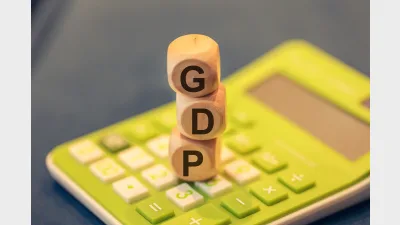How is ART navigating its portfolio exposures to China?



Australia’s second-largest super fund has explained its approach to the Asian giant and how it is balancing underlying risk, adding that avoiding China altogether may not be a “doable strategy”.
As the state of the Chinese economy continues to dominate headlines, Australian Retirement Trust (ART) holds “a very, very cautious approach” rather than an “outright no” to the country in its portfolios.
The world’s second-largest economy reported a GDP expansion of some 5.2 per cent in 2023, which outpaced a number of other large economies in the last year.
Looking ahead, it has set a target of 5 per cent economic growth in 2024, although the figure remains a far cry from the double-digit growth delivered in the last two decades.
Its property sector, which represents almost a third of the economy, has also proven to be troublesome, with housing sales falling 6.5 per cent in 2023.
At the start of the year, one of China’s biggest property developers, Evergrande, was ordered to liquidate in what has been described as a “slow train crash” by investment managers.
Speaking at an event in Sydney, ART’s head of private corporate assets Elizabeth Kumaru observed that China, on a whole, remains an “enormous engine room with significant growth.”
“It would, or should in theory, represent a material portion of an investment portfolio if you’re trying to catch global GDP growth, but we can’t ignore the geopolitical risks,” she said.
She noted recent developments from the US government, with China-based ByteDance, the owner of TikTok, given 165 days by the US House of Representatives to divest from the social media platform.
In a landslide vote of 352 in favour compared to 65 against, the House stated that app stores like Google Play and Apple’s App Store would be legally barred from hosting TikTok and other ByteDance-controlled applications if the parent company did not comply.
Acknowledging this, Kumaru said there could be real risks associated with investing in China.
“There has also been a material change post-COVID-19 with supply chain, there’s been onshoring, which also impacts investment within China [as] there is a desire to have more control over supply and supply chains. So, there is great caution,” she said.
“If you speak to investors in the US, it’s a flat no interest. Certainly, Asian managers are also [looking] to focus on other Asian regions because of investment demand.
“We don’t have an outright no, but we have a very, very cautious approach that considers all risks.”
According to the super fund’s chief economist Brian Parker, attempting to avoid risk by dodging China altogether would not be a beneficial strategy.
He argued that as investors, ART could not design portfolios based on anyone’s ability to precisely forecast geopolitical developments, but it could remain prepared to seize opportunities arising from any volatility resulting from geopolitical risks.
“But at the same time, China is so big that I’m not sure avoiding China as a sector is a doable strategy,” Parker mused.
“Let’s say the world is a really nasty place and you were just going to return to this island and not invest anywhere in that region, and you’d think you would be safe; there are certain scenarios under which even being 100 per cent home-biased will provide you no protection.”
Peter Barany, senior portfolio manager for public markets at the $260 billion fund, echoed the sentiment, explaining that even funds with no onshore exposure to China could still be affected by recent developments.
“In public markets, we do have an exposure to China onshore, holding direct Chinese companies in portfolios, but also you can have no onshore exposure to China and there’s still all these companies in the world where a large part of their growth comes from China buying their products or services,” he argued.
“We have both – we have Chinese mainland companies and we have companies that are benefiting from Chinese growth as well.”
For the investment executive, the ideal approach to combat risk stems from diversification.
“So, while we do have exposure [to China], it’s one of thousands of different geographic, company, and thematic exposures in our portfolio,” Barany said.
“Yes, there is a Chinese war risk and that’s probably not going to be good for anyone, but we have a whole lot of other companies that may step in and take market share from, say, a Chinese company that has to pull out somewhere.”
Recommended for you
Economic growth was weaker than expected, once again highlighting an economy largely sustained by population growth and government spending.
In this latest edition, Anna Shelley, CIO at AMP, shares the fund’s approach to current market conditions and where it continues to uncover key opportunities.
The mega fund has announced a $2.2 billion investment in a leading data centre platform, bringing its global real assets portfolio to nearly $60 billion.
In this latest edition, Australian Retirement Trust’s head of global real assets Michael Weaver explains the fund’s approach to finding new opportunities as it surpasses $300 billion in funds under management.













